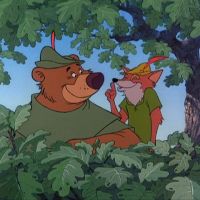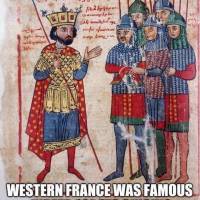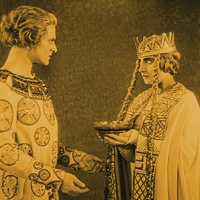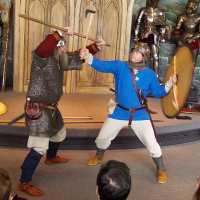The influence of Fritz Lang’s 1924 silent classic Die Nibelungen can be seen in the style and design of many Sci Fi and Fantasy films of the 80s from The Empire Strikes Back to The Adventures of Baron Munchausen. Whether unconscious borrowing or deliberate tribute, elements of this German classic helped make these films great.
The guide through the darkness
In Die Nibelungen, Alberich the dwarf leads our young hero Siegfried from a swampy setting into a dark cavern to the Nibelung treasure with a magic glowing globe to light their way. In The Empire Strikes Back, a character of dwarfish height finds Luke in a swampy setting, and, carrying a glowing object, leads Luke to Yoda – a Jedi master he seeks. Instead of a magic orb, Yoda holds Luke’s camp light.
To the primitive being Luke thinks Yoda is, the light seems a magical object. Like Siegfried, Luke is slightly reluctant to follow the short and hunched creature into the darkness. Fortunately for Luke, Yoda has no intention of hurting his guest, but In Die Nibelungen, Alberich tries twice to deceive Siegfried in an attempt to kill the young hero.
To further separate the tone of these two stories, the light serves a comedic purpose in The Empire Strikes Back, prompting Yoda’s classic toddler retort, “Mine! – or I will help you not!” It seems to almost parody the cliché of the guide holding a mysterious light because it isn’t magic at all – just a regular camp light. These references to Die Nibelungen are effective in Empire because the roles of the similar components are reversed. Fear is exchanged for humor and evil is replaced with good.
Though used for a different purpose, several identical elements of these two settings remain: the dwarf guide who appears out of nowhere, dark and swampy setting, glowing object to light the way, and young hero who has already achieved a great thing – in Luke’s case, destroying the Death Star and in Siegfried’s case, having just slain a dragon – and requires something from his guide through the darkness to reach his next destination.
The “guide” carrying a glowing orb is also used in The Black Cauldron, a 1985 Disney film adaptation of Lloyd Alexander’s Chronicles of Prydain. In this film, the young princess Eilonwy leads our young hero Taran through the dark depths of a castle in which they are both being held prisoner. Alexander incorporates the element of a glowing magical orb lighting the way in dark underground tunnels but reverses the role of his character by making the guide friendly instead of menacing.

Eilonwy leads Taran with a magical glowing orb in The Black Cauldron (copyright 1985 Walt Disney Company)
In addition to the motif of the stunted, odd, and sometimes grumpy guide and the light he carries to lead the way, the contrast of the darkness of a rocky passageway and the light of a luminous cavern is used in Die Nibelungen to invoke sense of wonder and the excitement that is felt from the thought of discovering hidden treasure. The light/dark contrast from dark tunnel to bright open space is also used in Jim Henson’s The Dark Crystal (1982) in a similar way as it is in Die Nibelungen. In The Dark Crystal, the cranky old hunched-over guide is Aughra. She first appears menacing, but seeing that she is good-natured, our young Gelfling hero Jen quickly trusts her. Aughra leads Jen through a dark passageway to a mysterious place. Once inside, a bright light suddenly fills the screen and the film score plays a theme that invokes wonder. It’s like entering another world – a peculiar world where science and magic seem to harmoniously meet in mechanical splendor. In Die Nibelungen, the light/dark contrast between the luminous cavern interior and the dark and swampy exterior is remarkable. To an audience in the silent film era, the sequence would have seemed as bright as the light cast upon Jen as he enters Aughra’s workshop in The Dark Crystal.
Inside Aughra’s workshop there is a giant mechanized model of the heavens, a concept Jen has seen drawn in the sand many times by the mystics, but never represented with such heavy and detailed moving industry. The same thing occurs in Die Nibelungen when Alberich the dwarf leads Siegfried into the luminous cavern. The contrast between dark and light and reality and magic and mystery is just as pronounced in this shot as it is in The Dark Crystal. Just as Jen is shown scientific industry in Aughra’s workshop, Alberich shows Siegfried the magical industry of the secret cavern. A massive crown, for example is being made for an ice giant. When Siegfried tries to reach through the window to touch that “other world” it quickly turns back into the form of a rocky wall of the cavern. It is, in a way, like that for Jen as well. Jen doesn’t understand what the model does. In the way the “magic” of the model is beyond Jen’s understanding, the “magic” of the ice king’s crown is beyond Siegfried’s physical reach.
The intention behind the guides showing the young hero “magical” things in these respective stories are in sharp contrast with each other. Aughra is leading Jen to new knowledge to help him with his quest while Alberich is showing Siegfried the wondrous riches of the caverns only enough to distract his naive guest long enough to kill him. Though both Jen and Siegfried are naive, the mood in each story couldn’t be more different. In The Dark Crystal, it is wonder, and in Die Nibelungen, it is foreboding treachery. Though one creates suspense and the other does not, they both carry epic quality.
Similar shots and wardrobe
The sequence where the Nibelung treasure arrives at Gunther’s castle and is unloaded looks similar to when Baron Munchausen packs up the Sultan’s treasures and carries it away in The Adventures of Baron Munchausen (1988). Again, the roles are reversed. The treasure is being packed instead of unpacked in Baron Munchausen while in Die Nibelungen it is being brought to the castle instead of being taken away. In Baron Munchausen, the reference is, of course, used for comedic purpose and any allusion to epic poetry only serves to further embellish the impossible quality of the Baron’s already inflated tales of his many exploits of highly questionable validity.
Also, notice the similar arched entrances of the castle in the two shots.

The Sultan’s treasure departs from the Sultan’s Palace in Terry Gilliam’s The Adventures of Baron Munchausen (copyright 1988 Columbia Pictures)
When Brunhild arrives at Gunther’s castle after Siegfried wins her for Gunther with trickery, the wide bright shot with steps and ceremonial guards looks strikingly similar to when the Atreides arrive on Arrakis in Dune (1984). By using this shot from Die Nibelungen, director David Lynch evokes something of the mood of the German story, alluding to the danger that awaits the House Atreides. Just as Brunhild walking into Gunther’s castle brings the demise of Siegfried and Burgundy, the audience watches the Atreides literally walking into the trap set for them by the Harkonnens. It is a beautiful shot and a tragic reminder that the family will soon be torn apart by betrayal.
The look of Brunhild’s battle garb was recreated in the 1981 film Dragonslayer. Galen, the unlikely dragonslayer, goes after the dragon Vermithrax Pejorative with a round shield and a spear, the same weapons Brunhild uses to test Gunther. Since Dragonslayer deals with the death of magic and its subsequent replacement by religion, the weaponry invokes the magic of the mythic world – and, more importantly, a mythic world with a dragon. The reference works, again, because the roles are reversed. Galen is the hero, while Brunhild is a villain.
By using the contrary sides of these borrowed elements, their usage is balanced, achieving a nearly unconscious invocation of the nearly timeless yet distinctive style, mood, and tone of epic.

Galen (played by Peter MacNicol) enters Vermithrax Pejorative’s lair in Dragonslayer (copyright 1981 Walt Disney Company)
Now, aside from the scenes described in the Nibelungenlied itself, what sort of design and imagery inspired Lang’s unique cinematic interpretation of the epic poem? As Journey to Perplexity points out, Lang seemed heavily inspired by the style of Klimt. In addition to design patterns, Lang also borrowed from other artists. This shot below of Gunther mourning the fading of Burgundy’s splendor in Die Nibelungen resembles both the composition and mood of Jean-Paul Lauren’s The Excommunication of Robert the Pious (1875).

The Excommunication of Robert the Pious by Jean-Paul Laurens (1875) Musée d’Orsay























